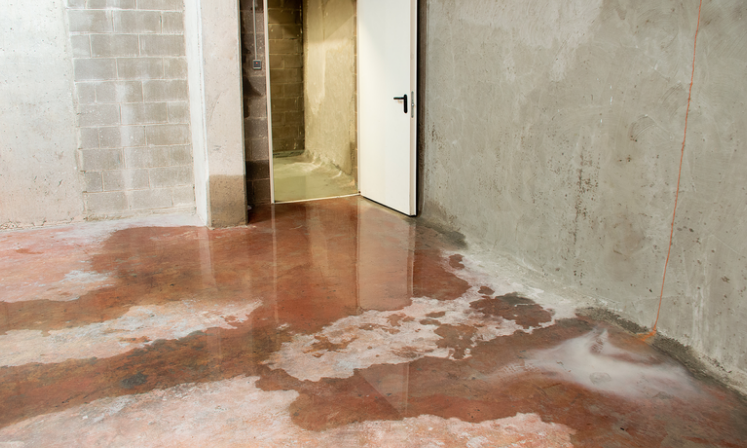Slab Leak Repairs: What You Need to Know

Understanding Slab Leaks
A slab leak is a term used to describe a leak in the water pipes that run beneath the concrete foundation of your home. These leaks can be particularly challenging to detect and repair because they occur underneath the slab, often leading to significant damage before the issue becomes apparent. Slab leaks can cause serious structural problems, increase your water bills, and lead to the growth of mold and mildew. Understanding what causes slab leaks, how to detect them, and the repair options available is crucial for protecting your home and maintaining its value.
Common Causes of Slab Leaks
Several factors can contribute to the development of a slab leak. One of the most common causes is pipe corrosion, which can occur over time, especially if your home has older plumbing systems. Corrosive elements in the water or soil can weaken pipes, leading to leaks. Poor construction practices can also lead to slab leaks if the pipes are not properly installed or if they are damaged during the construction process. Additionally, shifting soil or ground movement due to natural causes, such as earthquakes or changes in the water table, can put pressure on pipes, causing them to crack or burst.
Abrasion is another cause, which occurs when pipes rub against the concrete or other materials, eventually wearing down and leaking. High water pressure can also stress pipes, leading to potential leaks. Understanding these causes can help homeowners take preventive measures and recognize the early signs of a slab leak.
Signs of a Slab Leak
Early detection of a slab leak is essential to minimize damage and reduce repair costs. Some common signs that you might have a slab leak include:
- Unexplained Increase in Water Bills: A sudden spike in your water bill without a corresponding increase in water usage can indicate a hidden leak.
- Damp or Warm Spots on the Floor: If you notice areas of your floor that are consistently damp or warmer than the surrounding areas, it could be a sign of a leak beneath the slab.
- Low Water Pressure: A decrease in water pressure, especially if it’s isolated to one part of the house, can be a symptom of a leak.
- Mold or Mildew: The presence of mold or mildew in your home, especially if it’s concentrated around the baseboards or lower walls, can be a sign of excess moisture due to a slab leak.
- Cracks in the Foundation: Over time, the moisture from a slab leak can cause the foundation to crack, leading to structural damage.
- Sounds of Running Water: If you hear the sound of running water even when all fixtures are turned off, it could indicate a leak under the slab.
The Risks of Ignoring a Slab Leak
Ignoring a slab leak can lead to severe consequences for your home. Structural Damage is the most significant risk, as the water can erode the foundation over time, leading to cracks and even foundation failure. This damage can be costly to repair and may compromise the safety of your home.
Mold and Mildew Growth is another serious risk. The moisture from a slab leak provides an ideal environment for mold, which can spread throughout your home, affecting air quality and posing health risks to your family.
Additionally, slab leaks can lead to water damage to flooring, walls, and personal belongings. This type of damage can be extensive and may require costly repairs or replacements.
Repair Options for Slab Leaks
Once a slab leak is detected, it’s essential to address it promptly. There are several methods for repairing slab leaks, depending on the severity and location of the leak.
1. Spot Repair
Spot repair is often used when the leak is localized and easily accessible. This method involves breaking through the concrete slab at the site of the leak, repairing or replacing the damaged pipe, and then patching the concrete. While this method can be effective, it’s also invasive and may require additional repairs to the flooring and slab.
2. Repiping or Rerouting
In cases where the plumbing system is old or multiple leaks are present, repiping or rerouting may be the best option. This method involves installing new pipes, either through the slab or along the walls and ceiling, bypassing the damaged area. While more extensive, repiping provides a long-term solution and can prevent future leaks.
3. Pipe Relining
Pipe relining is a less invasive option that involves inserting a flexible tube coated with epoxy resin into the damaged pipe. The resin hardens, creating a new pipe within the old one, sealing the leak and reinforcing the pipe. This method is effective for minor leaks and can be done with minimal disruption to your home.
4. Slab Penetration and Leak Detection
In some cases, advanced leak detection methods, such as electronic amplification equipment or infrared thermography, are used to locate the exact position of the leak without breaking the slab. Once located, the leak can be repaired using one of the above methods. This approach minimizes damage to your home and reduces repair costs.
Preventing Future Slab Leaks
While not all slab leaks can be prevented, there are steps you can take to reduce the risk. Regular maintenance and inspections of your plumbing system can help detect potential issues before they become severe. Installing a water pressure regulator can help maintain safe pressure levels and prevent stress on your pipes. Additionally, using non-corrosive materials for your plumbing system and ensuring proper installation during construction can further reduce the risk of leaks.
Choosing the Right Professional for Slab Leak Repairs
Slab leak repairs require specialized knowledge and equipment, so it’s essential to choose a qualified professional with experience in this area. Look for a licensed and insured plumber who has a proven track record of successfully repairing slab leaks. Ask for references, read reviews, and ensure that the plumber uses modern leak detection methods and offers a warranty on their work. A reliable professional can accurately diagnose the problem and recommend the best repair method for your situation.
Conclusion: Protect Your Home with Timely Slab Leak Repairs
Slab leaks are a serious issue that can lead to extensive damage if not addressed promptly. Recognizing the signs of a slab leak, understanding the risks of ignoring it, and knowing your repair options are crucial steps in protecting your home. By taking preventive measures and choosing a qualified professional to handle repairs, you can ensure that your home remains safe, secure, and free from the costly damages associated with slab leaks.
Explore

What You Need to Know About Slab Leak Repairs

Monthly Car Insurance: What You Need to Know

Business Cell Phone Service: All You Need to Know

Cyber Insurance for Business: What You Need to Know
Everything You Need to Know About Hair Transplant Procedures

Top Trends in Apartment Rentals: What Renters Need to Know
